 The recent market volatility hasn’t stopped RIM from continuing to release iterative versions of their most popular devices. We looked at the all-touch Curve 9380 last month, and now the Bold line has been refreshed once more.
The recent market volatility hasn’t stopped RIM from continuing to release iterative versions of their most popular devices. We looked at the all-touch Curve 9380 last month, and now the Bold line has been refreshed once more.
From the ashes of the successful Bold 9700 and its successor, the 9780, comes the tiny, touchscreen-enabled Bold 9790. To take one look at this diminutive device you’d think it was merely a small refresh of a tired QWERTY design. But there are three practical, and one existential, improvements that make this one of the best BlackBerry devices ever released. Keeping in mind that this is very much the same experience you’ve come to love, covet or abhor, let’s take a look to see if this is the Berry for you.
Specs:
– 2.45″ 480×360 pixel capacitive touch display
– BlackBerry 7 OS
– 1Ghz Marvel Tavor MG1
– 768MB RAM, 8GB internal storage
– 5MP continual autofocus camera w/ LED flash
– VGA (640×480) video recording
– WiFi (a/b/g/n), Bluetooth, A-GPS, NFC, UMA
– 7.2Mbps download, 5.76Mbps upload
– 110 x 60 x 11.4mm
– 107g
The Phone
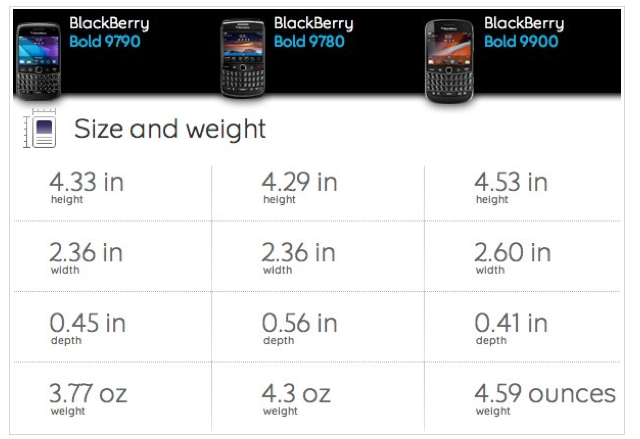
The Bold 9790 is small. Small in a way you never thought a Bold could be. While it may appear of a same berth as its predecessors, RIM has eliminated every spare ounce and millimetre At 11.4mm thick and only 107g, compared to the 9700’s 14mm and 122g, with a matte plastic graphite-coloured battery cover, the new Bold is about as compact and awesome in the hands as we’ve ever felt. If this is the last Bold of the BlackBerry OS line, it will be an appropriate send-off.
Besides the new lithe profile, the Bold 9790 has a slightly modified keyboard, of which the last three buttons on either side hug the phone’s curved sides. This allows the spacious keyboard to be as wide as possible while maintaining the aerodynamic symmetry RIM was going for. They also do away with the unified four-button combo below the screen, opting for individual buttons for the call, menu, back and end keys. While the tweak may have turned off die-hard Bold lovers in initial renders of the phone, in person they buttons are much flatter and more subtle.
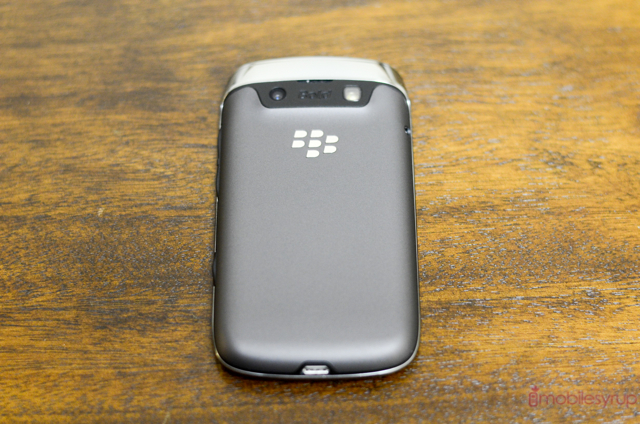 The rest of the phone’s body is standard RIM fare, circa 2011. They have opted for an aerodynamic look, replete with diving curves and fretted symmetry. There is a beauty to each line, and the side profile begs to be photographed. The back cover, which dips slightly from the camera module, is one of the best the company has ever designed: secure, comfortable and extremely sturdy; it took them a few years but they finally got it right.
The rest of the phone’s body is standard RIM fare, circa 2011. They have opted for an aerodynamic look, replete with diving curves and fretted symmetry. There is a beauty to each line, and the side profile begs to be photographed. The back cover, which dips slightly from the camera module, is one of the best the company has ever designed: secure, comfortable and extremely sturdy; it took them a few years but they finally got it right.
The 2.45″ screen is a modicum larger than its predecessor, but the reason we’re all here is its added touch capabilities. Like the Bold 9900 the bright, sharp LCD is touch-enabled. We found the tiny screen to be of the same responsiveness as its bigger brother, so swiping through home screens and selecting text got a little bit easier than with the trackpad alone. As expected, though, with such a small area in which to work the benefits of a touchscreen are largely moot, relegating one to inverted swiping over swaths of text, or gesturing horizontally through captured photos.
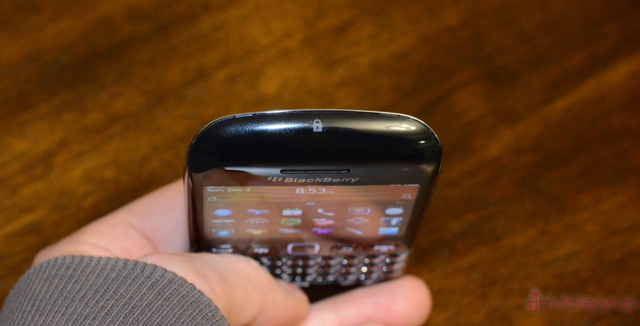 Unlike the Bold 9900 or Torch 9810, which both have screens big enough to feel relatively unencumbered by a thumb or forefinger, the Bold 9790 is at its most useful when combining the trackpad and light touch of a finger. Dialog buttons, such as the ones in App World, are large enough to hit on first try, but many apps developed for the identically-pixelled 9700 easier to navigate using the trackpad. Ultimately it all comes down to preference: the addition of a touchscreen to the smaller Bold design is undoubtedly positive, but ultimately superfluous. Many users of the 9700/9780 series would have likely been content without a touchscreen if it meant double the battery life.
Unlike the Bold 9900 or Torch 9810, which both have screens big enough to feel relatively unencumbered by a thumb or forefinger, the Bold 9790 is at its most useful when combining the trackpad and light touch of a finger. Dialog buttons, such as the ones in App World, are large enough to hit on first try, but many apps developed for the identically-pixelled 9700 easier to navigate using the trackpad. Ultimately it all comes down to preference: the addition of a touchscreen to the smaller Bold design is undoubtedly positive, but ultimately superfluous. Many users of the 9700/9780 series would have likely been content without a touchscreen if it meant double the battery life.
But RIM has excelled in the design of this keyboard: this is likely the best keyboard you’re going to find on a phone outside of the Bold 9900. Not only are the printed letters on each key bigger and bolder (with a new font!) but there is the same satisfying travel and perfect amount of feedback as found on the 9900. They’ve softened the blow of each key, muffling it to the light near-silence of a raindrop. Though slightly too narrow for our liking — the 9900’s keyboard is perfectly-spaced — RIM did the best job they could with the space allowed them.
Performance
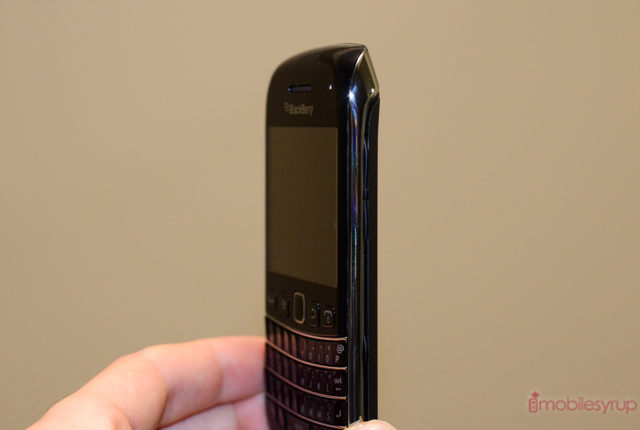 The other area vastly improved from the Bold 9780 is performance. The Bold 9790, with a little help from its 1Ghz processor and BlackBerry 7, chugs along without a care in the world. This isn’t the same chip as housed in the Bold 9900, but rather a faster variant of the 624Mhz Marvel chip that powered everything from the Bold 9000 to the Torch 9800.
The other area vastly improved from the Bold 9780 is performance. The Bold 9790, with a little help from its 1Ghz processor and BlackBerry 7, chugs along without a care in the world. This isn’t the same chip as housed in the Bold 9900, but rather a faster variant of the 624Mhz Marvel chip that powered everything from the Bold 9000 to the Torch 9800.
While there is no doubt the 9790 suffers somewhat from less processing power — we experienced the odd ticking clock every now and then — it never felt slow. Swiping through menus, whether by screen or trackpad, feels effortless, and we were even able to install two apps at once without slowing down the entire enterprise, our usual performance benchmark.
Since there are few BlackBerry apps to assiduously test the graphical performance of a new chip, we were left with the browser to prove its mettle, and were sincerely disappointed. Web pages tended to load quickly but suffered from a fair amount of checkerboarding. But there were times when pages would merely just sit there, unperturbed by our frustration, only to spring into action upon reload. We’d chalk the phenomenon up to a bad network connection, but it happened too frequently to be random, and too often when we had five bars of BIS service.
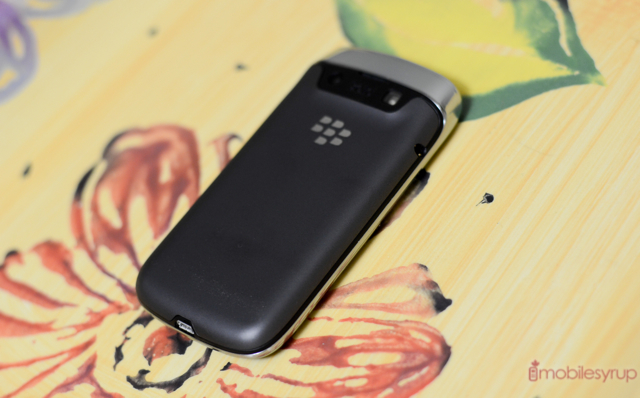 At first we tried navigating through web pages with the screen — flicking vertically to scroll down, etc. — but found the real estate too small to be productive. We ended up either losing our place in the low-resolution minefield, or accidentally hitting a link where I finger tended to stop. At other times, we’d have to resort to using the trackpad/cursor combination to activate a link, as it would not respond at all to our finger.
At first we tried navigating through web pages with the screen — flicking vertically to scroll down, etc. — but found the real estate too small to be productive. We ended up either losing our place in the low-resolution minefield, or accidentally hitting a link where I finger tended to stop. At other times, we’d have to resort to using the trackpad/cursor combination to activate a link, as it would not respond at all to our finger.
The amalgamated mess just led us to use the trackpad as we always did which, when combined with the capable and render-friendly BlackBerry 7 browser, actually treated us quite well. The browser itself, once a page loaded, worked well, and in most cases text realigned accurately to fit the allowable space. Pinch-to-zoom was smooth though, again, didn’t always respond to our touch. We’d recommend viewing mobile versions of your favourite sites if they exist, but we were happy to see HTML5-laden pages like Google+ and Facebook work without a hitch.
In order to test the screen, we loaded a couple movie clips onto the device. A 720p h.264-encoded movie trailer played smoothly and looked extremely sharp, if a little constrained, on the 2.45″ screen. All compatible games played great, and the added use of the touchscreen helped us in quickly selecting and moving things where they needed to go.
Camera
The Bold 9790 has a 5MP autofocus camera that takes great shots in good lighting, though as with most BlackBerry’s, the sensor isn’t big enough to capture adequate light in low-light situations. The flash is capable, though leans towards overexposure, and the auto white balance is actually quite accurate. Colours are bold and lively, with deep blacks and true whites. Because RIM graciously added full autofocus optics to the Bold 9790 it is able to take excellent macro shots, and can perform continual autofocus when lining up a shot or taking video.
Video, as opposed to the rest of the high-end BB7 contingent, can only be captured at a disappointing 640×480 resolution. We’ll blame the relatively slow single-core processor for being unable to encode 720p in real time, but it’s sure disappointing to see a camera being released at the end of 2011 with a max video resolution of a circa-2005 Nokia feature phone.
Battery Life
 While not coming close to the glory days of the Bold 9700, where two or three days of moderate use was possible from the 1500mAh battery, the Bold 9790 lasts much longer than the 9900.
While not coming close to the glory days of the Bold 9700, where two or three days of moderate use was possible from the 1500mAh battery, the Bold 9790 lasts much longer than the 9900.
Both devices have the same 1230mAh JM1 battery, but whereas we were unable to get more than eight hours on a Bold 9900, it wasn’t uncommon to have 20% left by the end of the day on the smaller Bold. The reasons behind this are pretty simple: a smaller touchscreen plus a slower more power-efficient CPU. Obviously if you’re synching three push email accounts and using BBM non-stop, you’re going to deplete the battery faster, but if you’re trying to avoid the the heartache of the 9900, the Bold 9790 may the right compromise for you.
We looped the aforementioned 720p movie trailer and got 7hrs 24min from the test, which is nearly double what we got from the Bold 9900. Note that the software version loaded on the Bold 9790 was 7.0.0.528.
BlackBerry 7 Experience
 As we say in every BlackBerry review, these days if you are buying a RIM device you have to know what you’re getting yourself into. You’re getting a top-rate set of first-party apps from RIM itself, including Podcasts, News, BBM Music, BBM, Twitter, Facebook, Google Chat, etc. You’re getting a mature operating system that is often buggy, glitchy and slow, but when it’s running well is very pleasant to use.
As we say in every BlackBerry review, these days if you are buying a RIM device you have to know what you’re getting yourself into. You’re getting a top-rate set of first-party apps from RIM itself, including Podcasts, News, BBM Music, BBM, Twitter, Facebook, Google Chat, etc. You’re getting a mature operating system that is often buggy, glitchy and slow, but when it’s running well is very pleasant to use.
With the combination of touchscreen and keyboard, you have access not only to all the keyboard shortcuts like “T to top” and “C to compose” as well as the “long-hold-for-menu” overlay on the screen. You have one-press access to the camera, universal search and a world-class standards-compliant browser. Email support is still the best on the market, bar none, and but for the limited selection of apps, we can tentatively say the same about messaging. Notifications are robust, call quality is excellent, and data speeds significantly improved over previous generations.
What you’re missing, fundamentally, is the robust app ecosystem found in iOS and Android. You’re missing wide developer support, though the BlackBerry SDK tools are improving. But mostly you’re at the end of the line of an operating system that was not build to withstand the rigours of modern-day usage. Apps are ugly, to put it mildly; they run slowly, have vexing interfaces and limited features compared to their iOS and Android peers. The OS relies too heavily on menu-button context lists or finicky touch overlays, and despite the relative smoothness of BB7’s Liquid Graphics, it’s not hard to tell the Java-based framework is nearly ten years old.
And while we didn’t hit any app crashes on this particular unit, we had to pull the battery a number of times, often after losing an internet connection. There is 768MB of RAM onboard, but at times, with several apps open, performance noticeably declined.
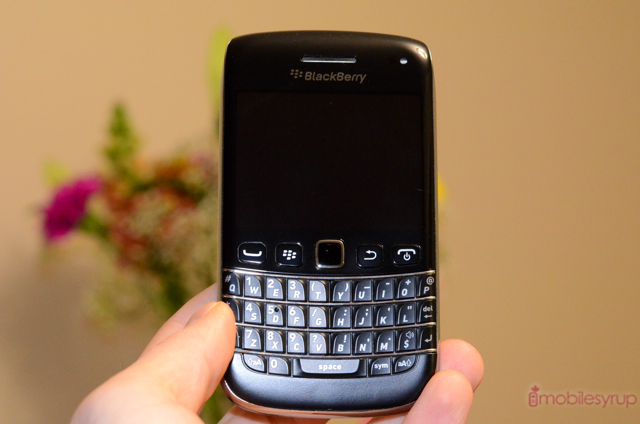
Network Quality
As with most BlackBerry’s, the Bold 9790 has incredibly clear call quality and unmatched reception. There were very few areas we didn’t have full coverage, and even when reception was not ideal the person on the other end could hear us very well. Unfortunately the mono speaker was much softer than we expected, and significantly less effective than any other BlackBerry we’ve used.
And unlike the Bold 9900 and the rest of the high-end BB7 line, the baseband inside the 9790 only supports maximum download speeds of 7.2Mbps. This wasn’t as noticeable as on the Curve 9360 since much of the phone’s perceived speed comes from the 1Ghz processor, but it definitely affected download speeds in a negative way.
Conclusions

Without encroaching too much on the BlackBerry Bold 9900’s firm flagship stance, the 9790 slips almost unseen into the strong BlackBerry 7 line-up. With slightly more conservative specs, and a much cheaper price as a result, we’re unsure where it fits. With the Curve 9360 available for $300 outright, and the Bold 9900 for $600, at $450 the 9790 literally ends up right in the middle; if you’re buying outright, price could be a deciding factor.
But if signing a 3-year term, the options become a lot murkier, and more carrier-dependant. The Curve 9360 is available for free on most carriers, whereas the Bold 9900 can be had for much less than its $169 carrier price from places like Future Shop or Best Buy. The Bold 9790 is debuting at a digestible $99, but that will drop quickly, likely to $0 by early next year. It’s a much better phone than the Curve 9360, though if you’re uninterested in a touchscreen and more so in battery life the cheaper model may be the way to go.
The Bold 9900 has metal accents and a gorgeous, thinner bezel, but its battery life is atrocious. The 9790, with its diminutive lower-resolution screen, has a great keyboard that may be too narrow for those with larger hands. But its longer battery life and robust build may win people over.
We’re not going to make the argument to buy a BlackBerry over an Android phone or iPhone. If you’re even considering the Bold 9790 you’ve likely made that decision already. But if you love the Bold 9700’s form factor and yearn for a bit of BlackBerry 7, this is probably your best choice, and for what it’s capable of, we loved using it.
The BlackBerry Bold 9790 is available from Rogers, Telus, Bell and its various subsidiaries, as well as Future Shop and Best Buy.
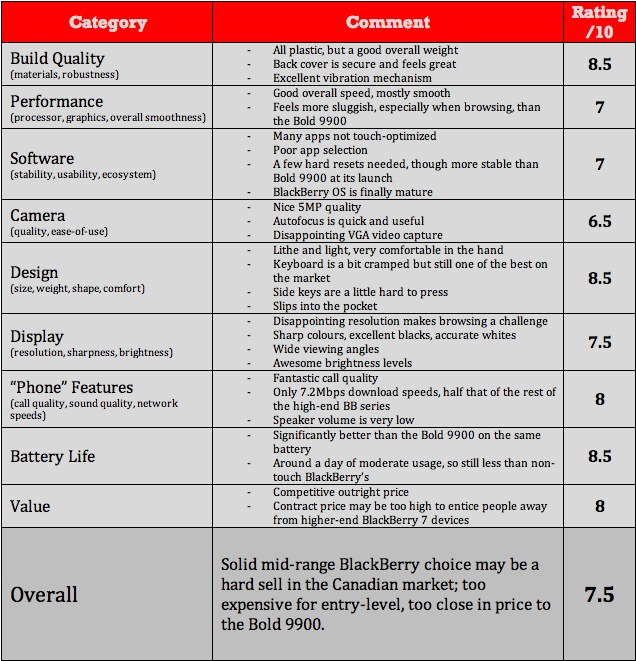
A quick note on our new rating system. We have attempted to address a number of issues and inconsistencies with our single-number system. Many readers found it confounding that a $600 phone could get the same 7/10 rating as a $200 phone. With this new system we are going to rate each aspect individually, with each one being weighted according to the overall value of the device.
It is extremely difficult to obtain an objective rating from a subjective review: there are so many factors that go into each score, but mainly it’s from the individual perspective of the reviewer. Often an emotional connection with a device — its feel, its presence — can alter a final score. If we love a device despite its glaring flaws, it is our prerogative to give it a higher overall rating, and the same applies for an objectively perfect device that just feels wrong.
This rating system will evolve over time and we hope it suits everyone.




